There’s a chord progression that is used in many genres of music, and there’s a reason for this description. The intensity builds as the bass pattern leaps up a 4th, then down a 3rd, and this continues. The lift is greater than the descent. “We Wish You a Merry Christmas” is an excellent example.
Example 1

Play the song without the accidentals [B natural and C sharp] and note the difference when you play G minor and A minor chords. The G major chord creates a stronger pull to the C chord, and likewise a change from Am to A creates a strong pull to Dm, the vi chord. These are called secondary dominants: V of V and V of vi. The same harmonic progression can be used with a scale in the bass (see Example 2).
Example 2
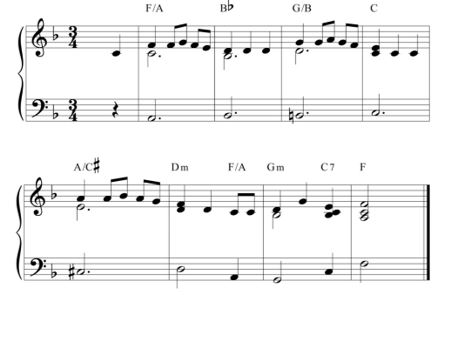
In the above example and in the one that follows the progression is used with an ascending melodic line that begins with the first pitch of the scale. Play this familiar Welsh tune as written, then with a scale in the bass, starting with G/B.
Example 3
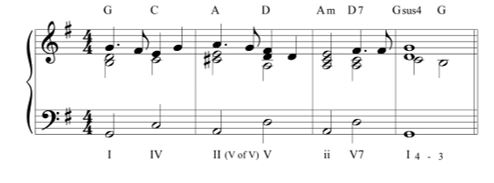
In the following excerpt from Handel’s Messiah the ii chord and iii chord are not changed to major (see Example 4).
Example 4
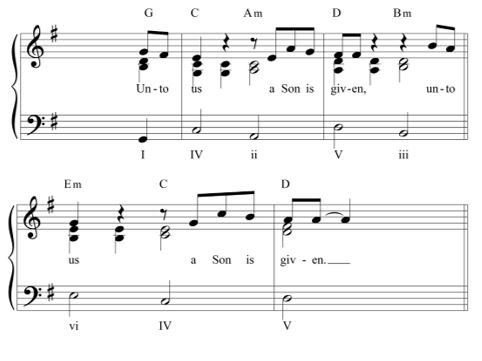
Play the above example, changing the ii and iii chords to major and note the difference. Sometimes the progression is beautifully ornamented as in the following excerpt from Suite in D Major by J.S. Bach. In this example the progression begins with the 5th pitch of the scale (see Example 5).
Example 5
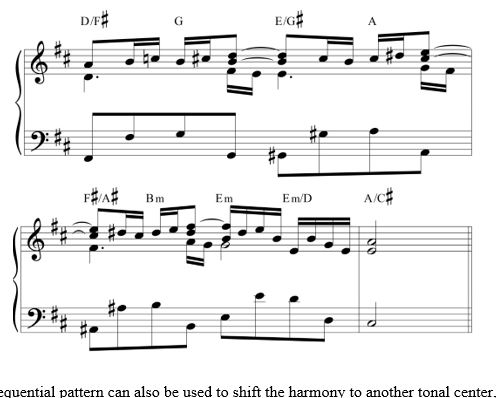
This sequential pattern can also be used to shift the harmony to another tonal center, as in this excerpt from the U.S. Navy hymn. Chord inversions are used to create scale wise movement in the bass, but the harmonic progression remains the same: G to C, A to D, and B to Em.
Example 6
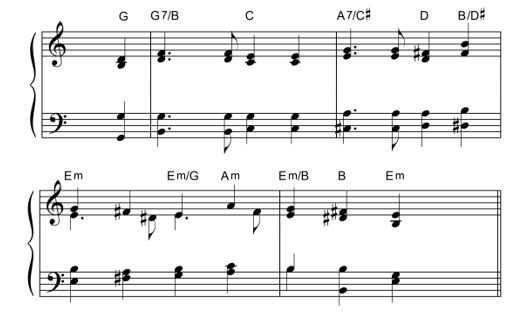
An enjoyable way to develop a command of this progression is to transpose “Do Re Mi” from The Sound of Music to different keys. The sequential harmonic progression begins with the phrase, “Sew, a needle pulling thread” and the starting pitch of the phrase is the 5th tone of the major scale. Challenge yourself to apply the progression in the key of Eb by providing an accompaniment for the melody in Example 7. You could also gain first-hand experience by composing your own melody that includes this sequential chord pattern.
Example 7
A recording of the song from which the following excerpt is taken is recorded (see link).
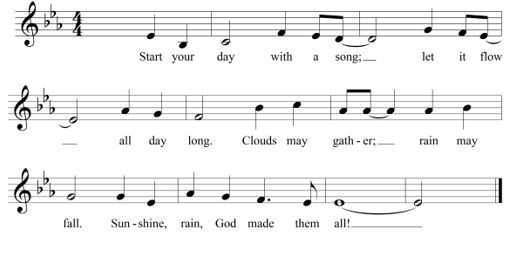
Additional information is available on Ron’s website: www.How2PlayByEar.com.
Comments are closed.